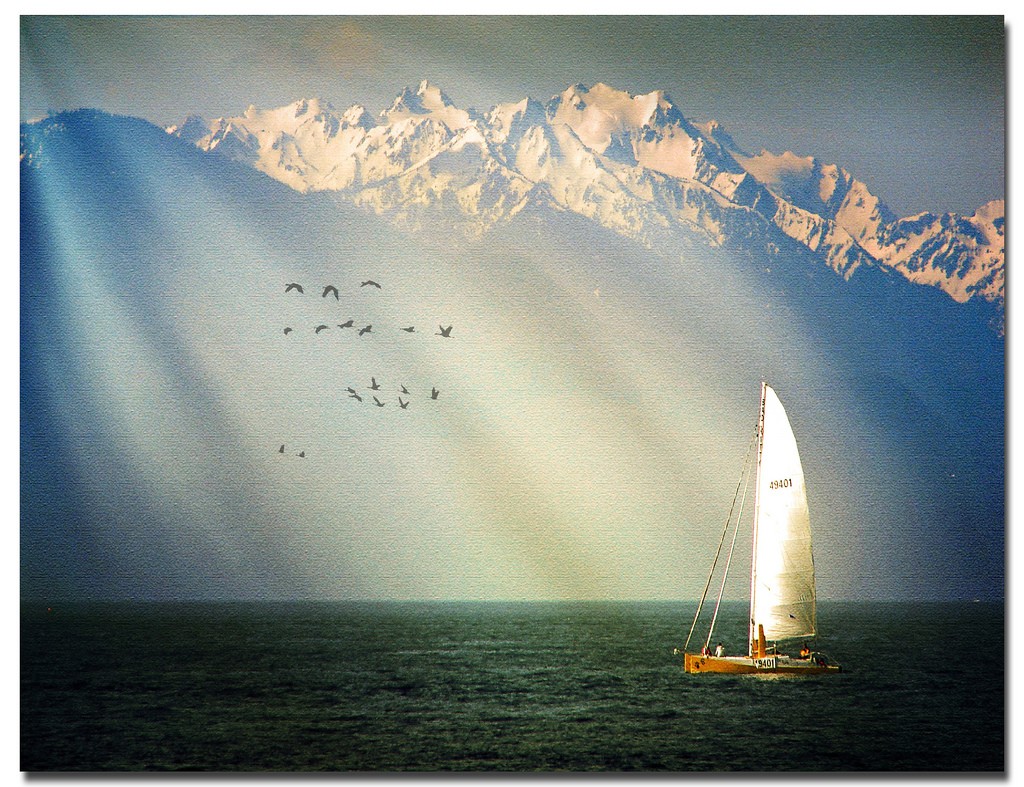Sailboat Racing, Iditarod-Style—A look at the Race to Alaska
by David Schmidt, Sail-World USA Editor on 29 May 2015

Vancouver Island sailing SW
When it comes to big adventures in small boats, it’s tough to beat the Race to Alaska, which starts on June 4 in Port Townsend, Washington, and takes racers to Ketchikan, Alaska, by way of a stopover in Victoria, British Columbia, on the southern tip of Vancouver Island. The race rules are straightforward and simple—get to Alaska, via any type of non-motorized craft, as fast as possible, via any route, as long as the journey is self-supported (read: no private resupply or chase boats).
The two-stage race starts in Port Townsend and takes the fleet across the Straits of Juan de Fuca for a 40-mile shakedown run before a lay day in lovely Victoria. From there, the fleet progresses 710 miles north, starting on June 7, encountering huge tidal swings, 50 degree water temperatures, and wilderness beaches along the way. Orca whales, grizzly bears, salmon and bald eagles will be common sights, and self-sufficiency and solid seamanship will be as important to success as lightning-fast maneuvers and perfectly choreographed crew work.
The race itself was the brainchild of Jake Beattie, a longtime small-boat adventurer, a dedicated sailor and the Executive Director of the Northwest Maritime Center, which is located in Port Townsend. Beattie himself is racing to Alaska and is no stranger to big adventures aboard small sailboats that he buys for a song and fixes up with generous dollops of elbow grease. According to Beattie, the prize for first place will be $10,000, while the second-place team will be handed a shiny set of steak knives.
A look at the scratch sheet for the event reveals a lot about the thinking that racers have put into this event, with some teams opting for multi-hulls, others for rowboats, while still others have selected monohulls and even South Pacific-style Proas. While the rules forsake internal-combustion engines, there’s no stipulation that racers must only use the wind for locomotion, opening the door to oar-powered craft.
While oars might seem like a rough way to travel 750 miles, they offer the advantage of providing Velocity Made Good even when the wind machine is shut off-a common occurrence in these wilderness waters. Moreover, oar-powered momentum could prove critical up north, where the tides are strong enough to sometimes force whales to wait for slack water. Because of this, some teams have opted for vessels that use a combination of oars (or pedal-driven forward propulsion) and sails-likely a smart move, given the huge set of variables that await the fleet en route to Alaska.
As for safety, the race provides a sweep vessel, but each team is solidly in charge of their own well-being and personal safety. This is where sound seamanship, a serious respect for the effects of cold water and perhaps a pinch of local knowledge come into play; transiting between Washington State and Alaska is serious business aboard yachts of any size, but even more so on small, open craft that offer little in the way of protection for the crew, should things turn south, weather-wise.
Fortunately, teams are allowed to utilize shore services such as a motel room or a resupply of groceries (or even a warm meal at a waterfront pub), so long as they are unsupported between towns and do not receive help from tenders or team-support vessels. This also allows teams to make repairs to their vessels en route, which could prove to be key, given the log-strewn nature of these desolate waters. And that’s not to mention the ships and other “heavy metal” that also commonly transit these waterways.
Racing starts on Thursday, June 4, and it will likely take teams a couple of weeks to reach Ketchikan. If successful, this event could evolve into a regular adventure race here in the Pacific Northwest, so stand by for more news and details, as they become known.
For more information, aim your web browser at www.r2ak.com
If you want to link to this article then please use this URL: www.sailworldcruising.com/134833